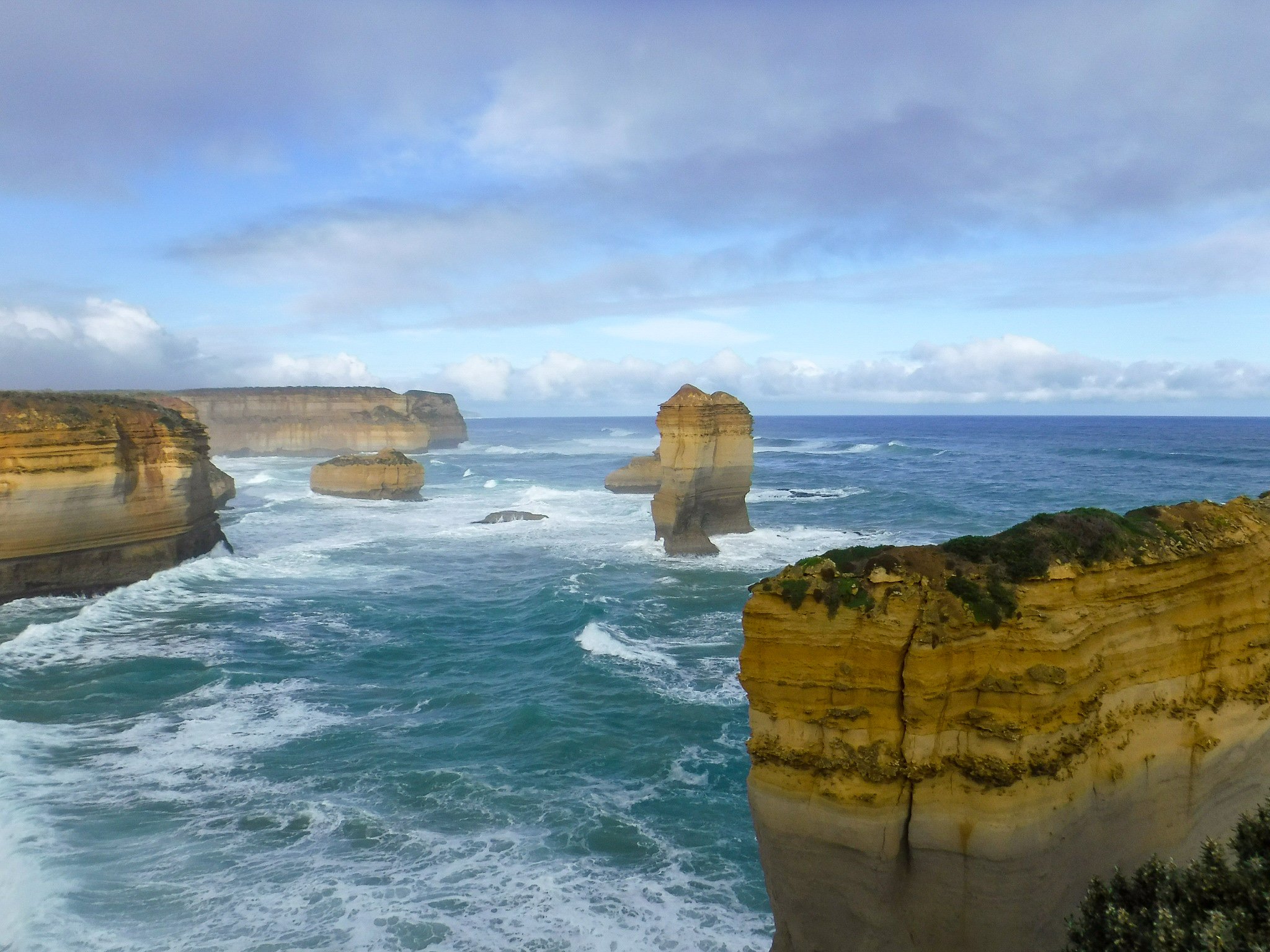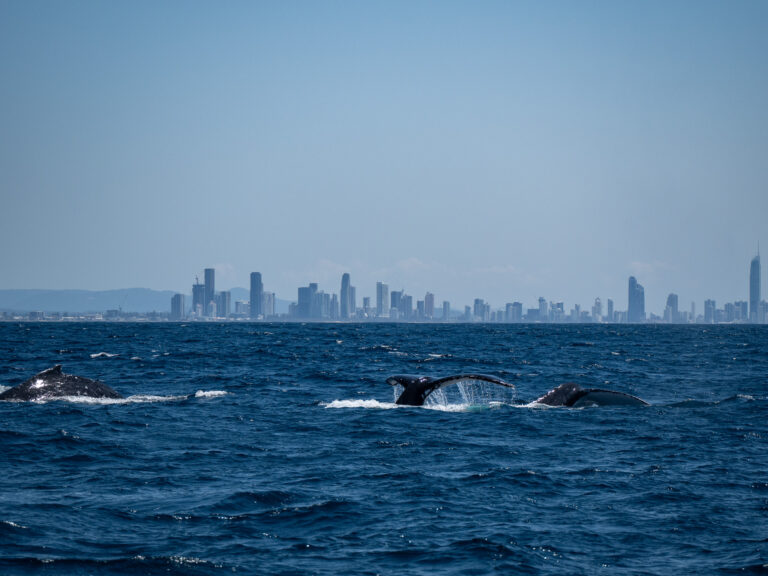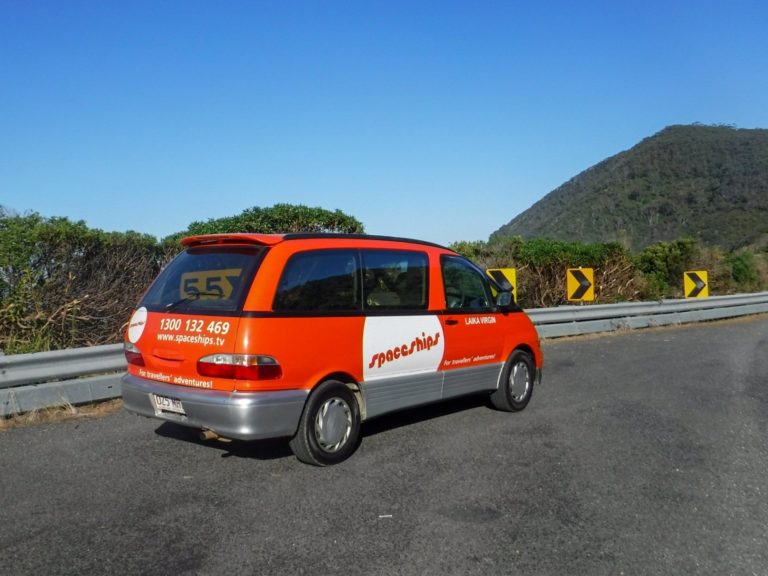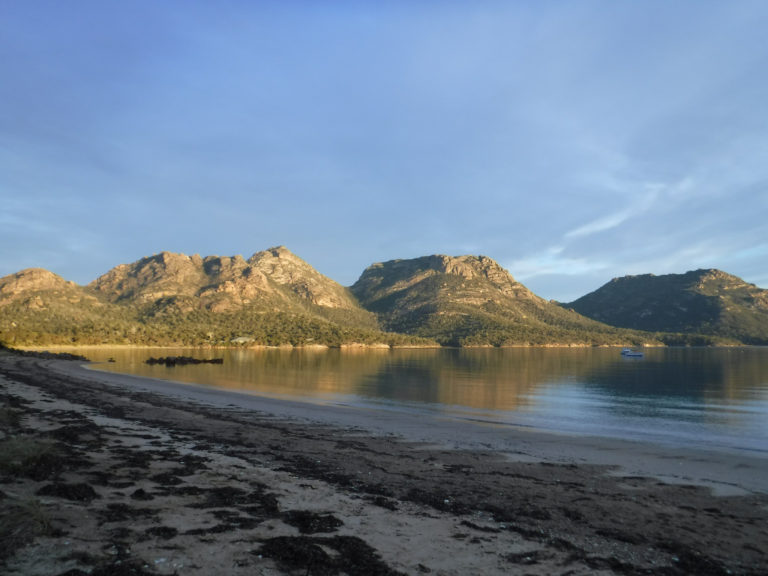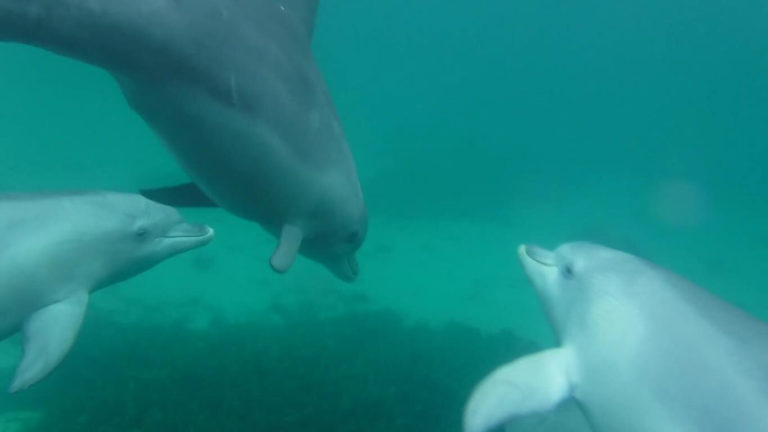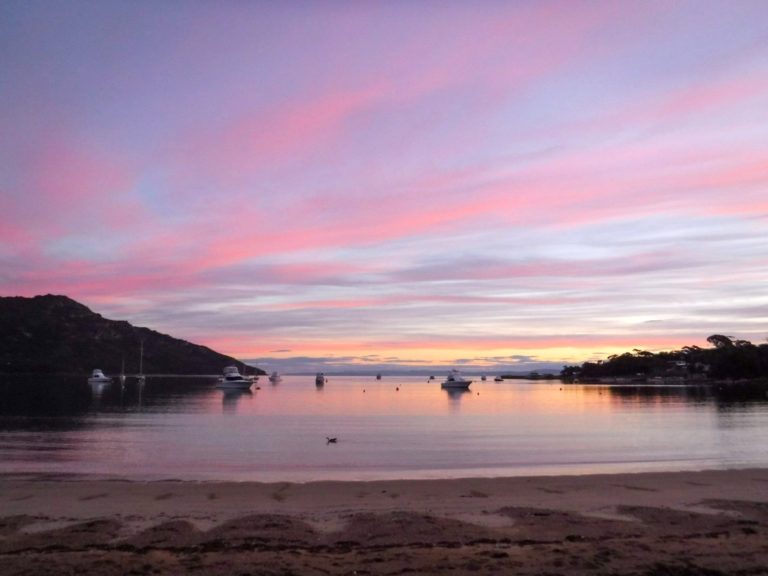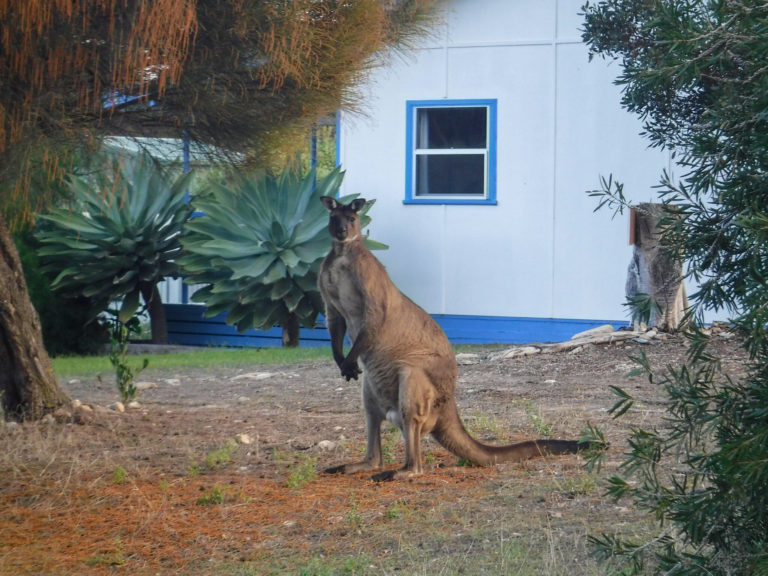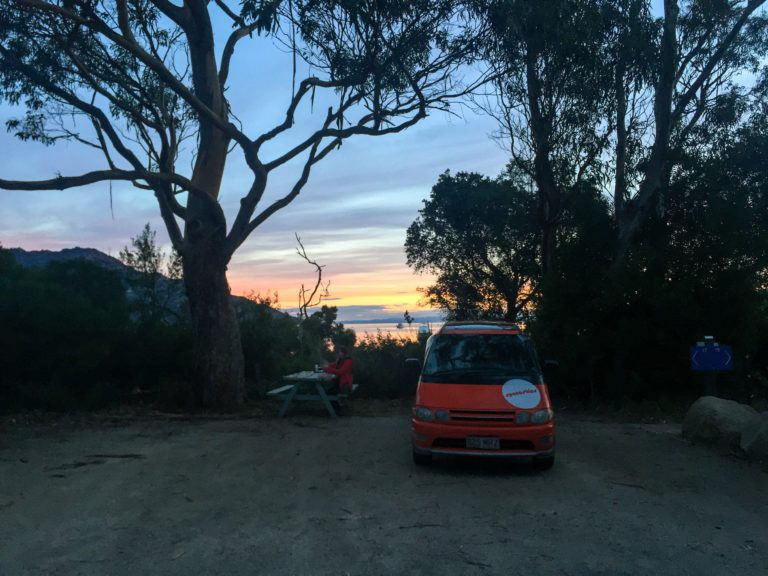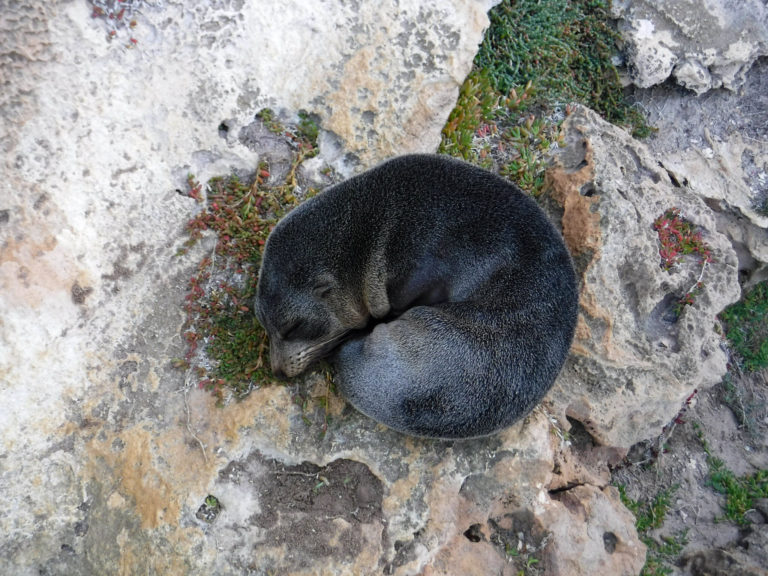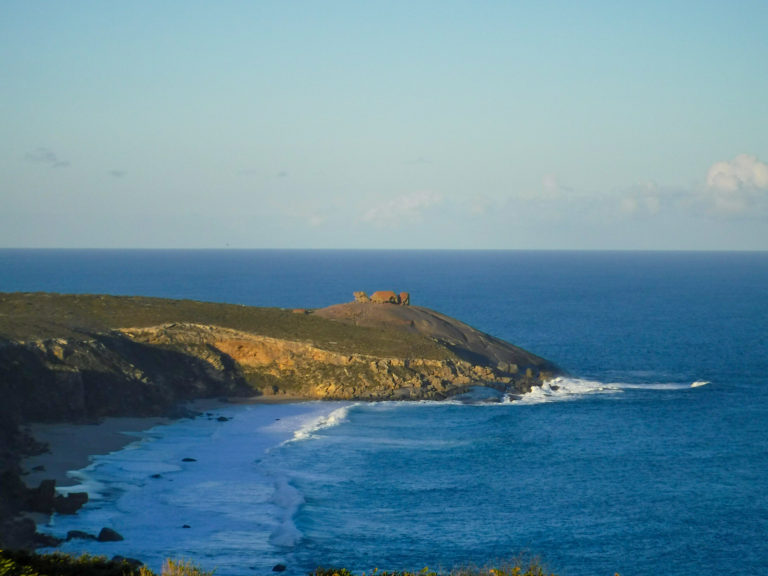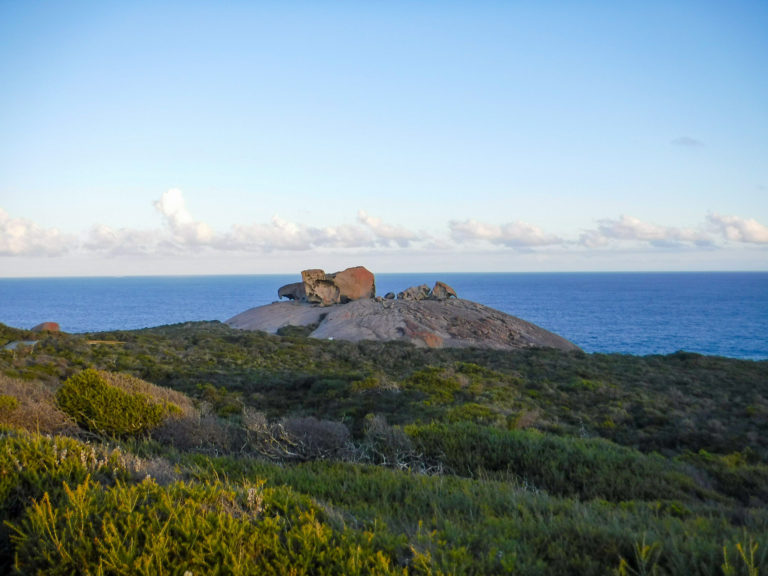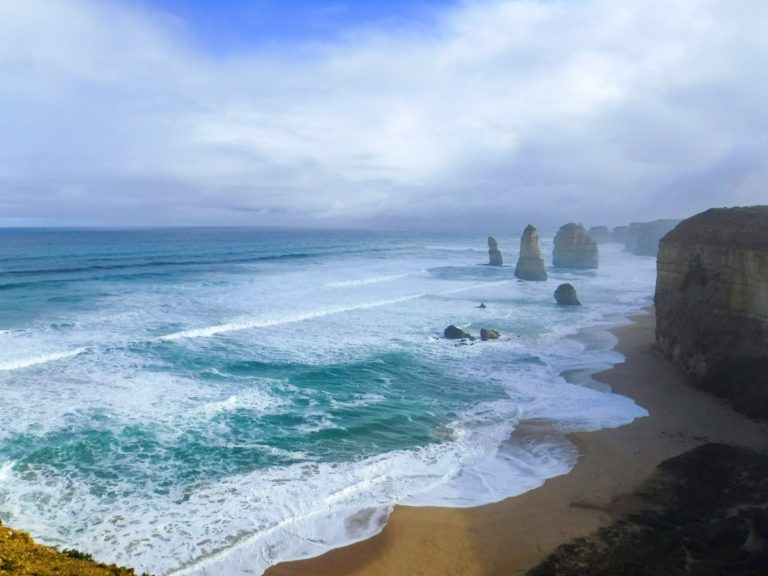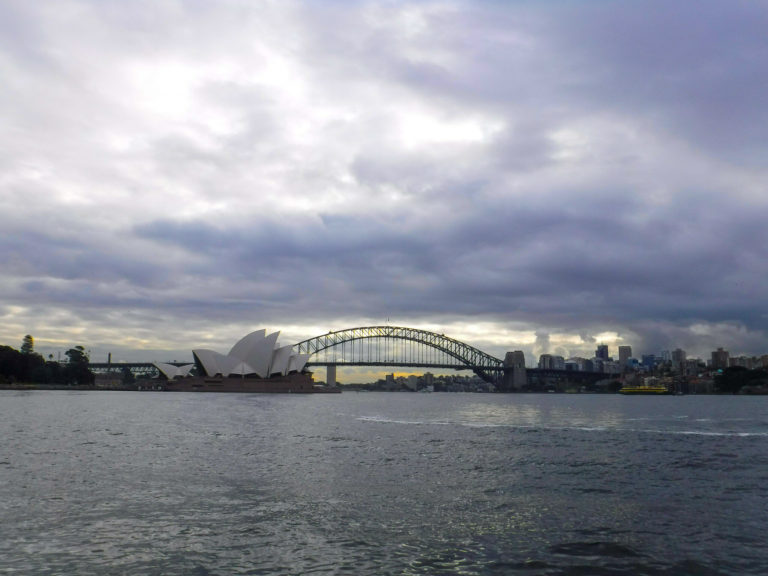Australia’s Great Ocean Road: A 3 Day Coastal Road Trip Itinerary
(Updated 2023)
This post may contain affiliate links, which means we might earn a small commission on anything purchased through these links at no extra cost to you. Learn more here.
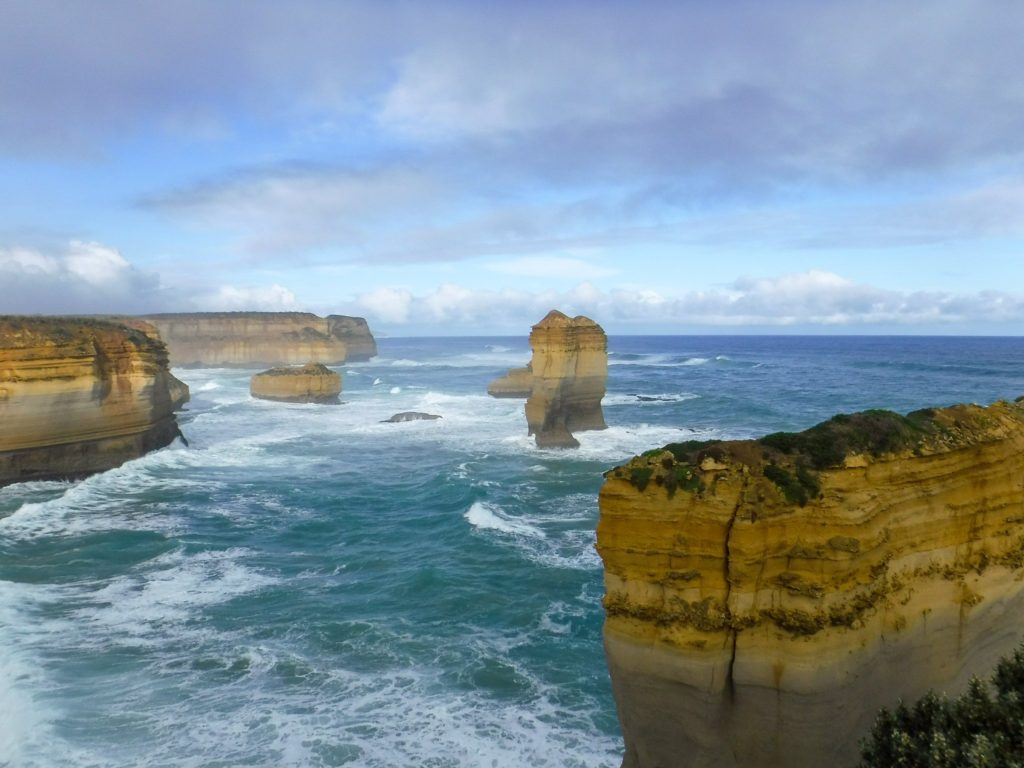
Australia’s Great Ocean Road is one of the the best coastal road trips in the world. Staggering cliff faces, thrashing seas, abundant wildlife and winding open roads await. While you could spend weeks traversing the beautiful towns and sights of the Great Ocean Road, 3 days is the perfect amount of time to take in this epic part of the south coast of Australia.
Time needed: 3-5 days.
When to go: March-April for warmer weather and to avoid the Summer crowds, June-October for the quietest roads, but chances of rain are higher.
Weather: Averages of 7°C-15°C in the Winter and 15°C-25°C in the Summer.
Side of the road: Drive on the left.
Language Spoken: English.
Currency: Australian Dollar.

What is the Great Ocean Road?
The Great Ocean Road is an Australian National Heritage listed stretch of road that winds more than 240km along the south-east coast of Australia between the coastal cities of Torquay and Allansford. It makes for one of the most epic road trips in the world. On the way you’ll discover lots of pristine beaches, stunning lookouts, impressive coastal landscapes and possibly even local Aussie wildlife!
The Great Ocean Road is also the world’s longest war memorial, built by returned WWI soldiers as a memorial for all those who lost their lives in the war. This stretch of coast is infamous for its treacherous seas too.
The most popular way to drive the Great Ocean Road route starts from Melbourne and then works east to west along the coast. This means you’re driving on the side of the sea for uninterrupted, sweeping views, and leads up to the pièce de résistance: Twelve Apostles Marine National Park.
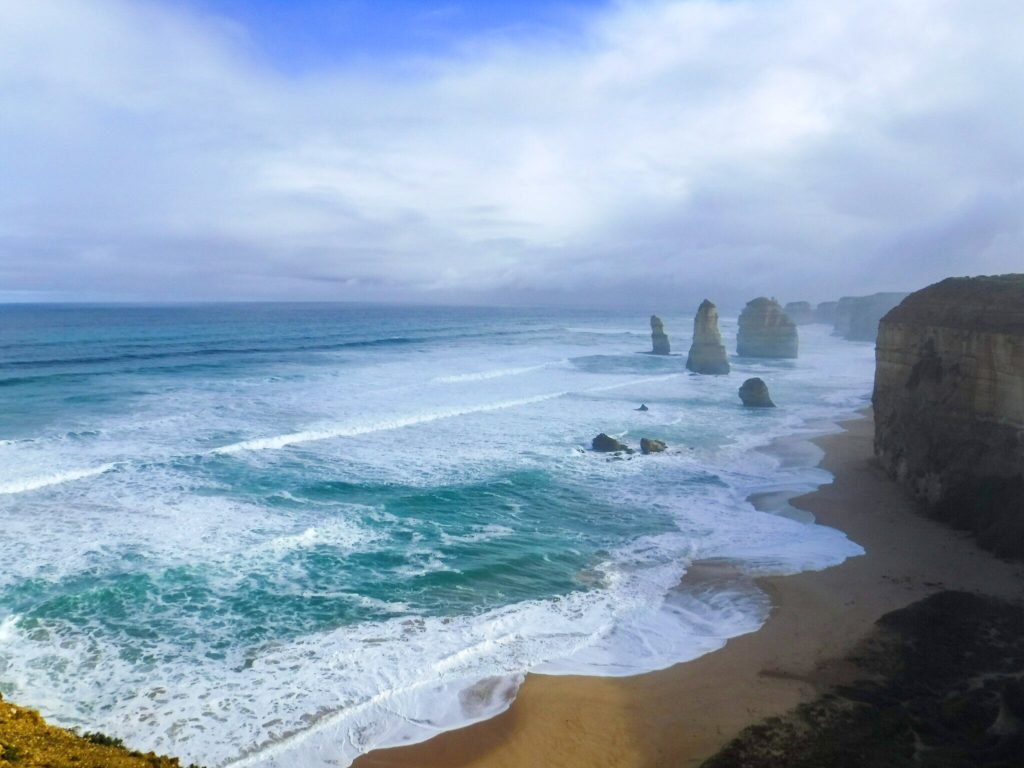
How to get to the Great Ocean Road
You can get to the Great Ocean Road by public transport: catch a V/Line train from Southern Cross Station in Melbourne to Geelong, which takes 1 hour. Then take a bus from Geelong Station to your destination on the route.
An easier option would involve booking a tour, which will pick you up and drive you the whole way. Tours depart from Melbourne and Torquay.
It is also possible to do explore on foot and hike the The Great Ocean Walk. This trek takes around 8 Days and starts at Apollo Bay.
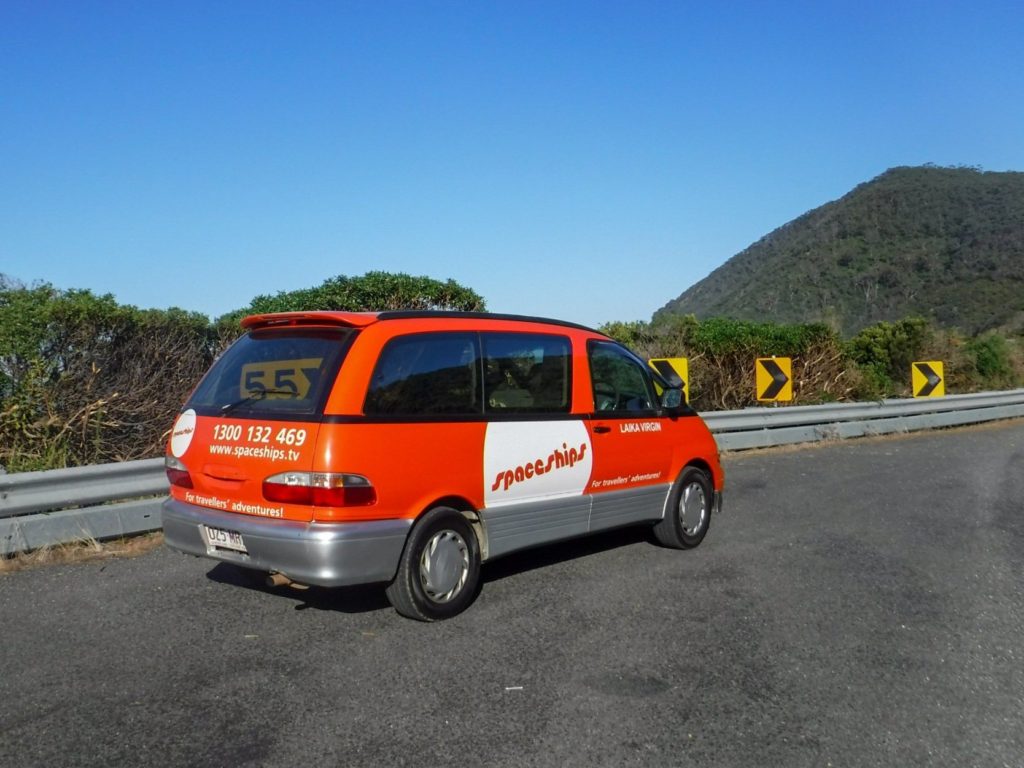
Looking for affordable accommodation with the freedom of having your own car?
Consider hiring a Spaceships Camper-Car! Each car comes fully equipped with all the living, cooking and sleeping facilities you need, plus you get unlimited kilometres, no one-way fees, free after-hours pick-up & drop-off service and 24-hour roadside service! Not only is it a bucket list experience to camp in Australia’s countryside, but a Spaceship is a great budget-friendly option for adventurers too. Pick up and drop off at Melbourne or Hobart to see the best that Tasmania has to offer.
Hiring a car and driving yourself is by far the best way to experience the Great Ocean Road. We would highly recommend hiring a Spaceship from Melbourne for your journey. These family-sized cars are converted into camper-cars and are a smaller and much cheaper option than hiring a campervan (although they do offer these as well). You can read more about our experience with Spaceships here. Melbourne to the coastal town of Torquay, the first stop on the route, is 105 km and takes just over an hour in a car.
Read next: Camping in a Compact Camper-Car in Australia
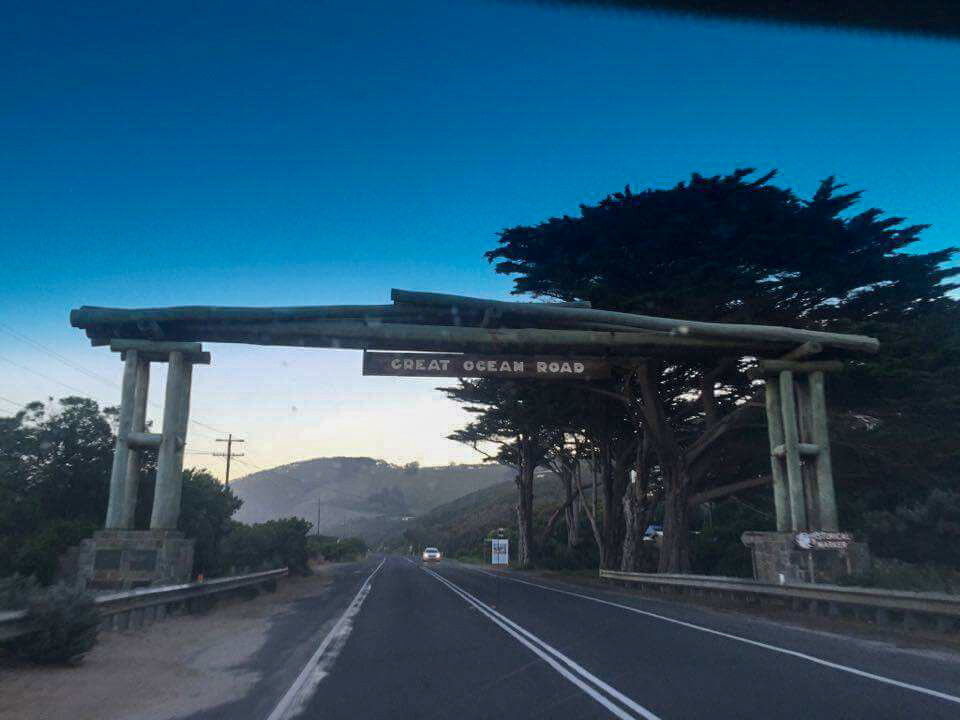
What is there to do on the Great Ocean Road?
From beginning to end, the Great Ocean Road route is full of rugged coast, swelling surf and incredible views. You could easily spend a few weeks exploring all the towns and attractions on the route, but this article is going to explore how to see all the main points in just three days. If you’d like to find out ALL the stops on the Great Ocean Road, read our Thorough Guide to Australia’s Great Ocean Road.
Here are the main stops in order:
- Torquay
- Bells Beach
- Aireys Inlet
- Memorial Arch at Eastern View
- Lorne
- Erskine Falls
- Teddy’s Lookout
- Sheoak Falls
- Kennett River
- Apollo Bay
- Maits Rest Rainforest Walk
- Great Otway National Park – lightstation
- Gibson Steps
- The Twelve Apostles
- Loch Ard Gorge
- Port Campbell
- The Arch
- London Bridge
- The Grotto
- Bay of Martyrs
- Bay of Islands
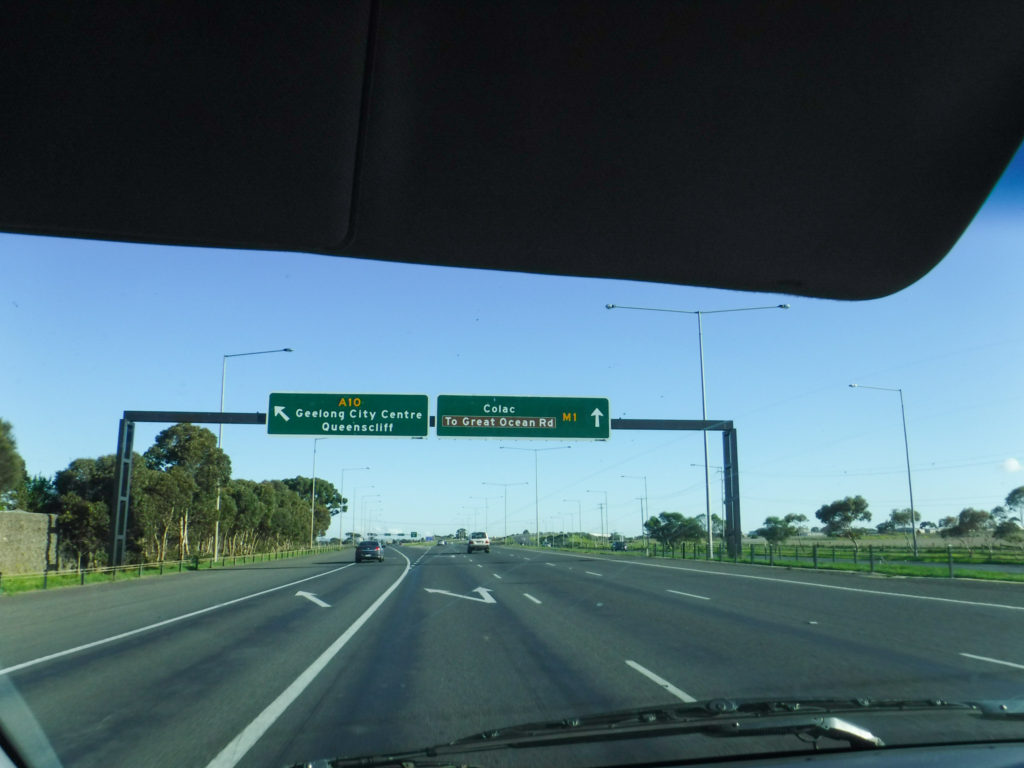
Day 1 – Melbourne or Torquay to Lorne
You’ll most likely start your trip from Melbourne, the largest and closest city to the Great Ocean Road. From here, follow the M1 to Geelong, then take the C134 and join the B100 – The Great Ocean Road. There are plenty of signs from Melbourne for the Great Ocean Road, so if in doubt, just follow these. After about 1 and 1/2 hours driving, you’ll arrive at Torquay, a little coastal town that is the gateway to the Great Ocean Road. You’ll find a big surf culture here as Torquay is the home of Bells Beach and the birthplace of iconic brands Rip Curl and Quicksilver.
Bells Beach
Bells Beach is one of the world’s hottest surf hubs and is home to the annual Rip Curl Easter Pro, the longest running surf competition on the planet. It is named after William Bell, a Master Mariner, who owned much of the property here in the 1840s. Whether you’re a beginner or pro surfer, there’s no better place to ride the waves, or take a beginner’s surf lesson.
We were travelling in a Spaceship, a bright red and white compact camper-car, and when we pulled into Bells Beach car park we immediately saw that almost every other vehicle was a bright coloured, decorated campervan too! As the first stop on the Great Ocean Road, it can be quite busy here so try to avoid the middle of the day.
Looking out over the beach, we were also struck by how big everything was. The cliffs on the south coast of Australia are so much bigger than we were used to in the UK and the waves were rolling in for much longer than we’s ever seen. Of course, there were a lot of surfers in the water too.
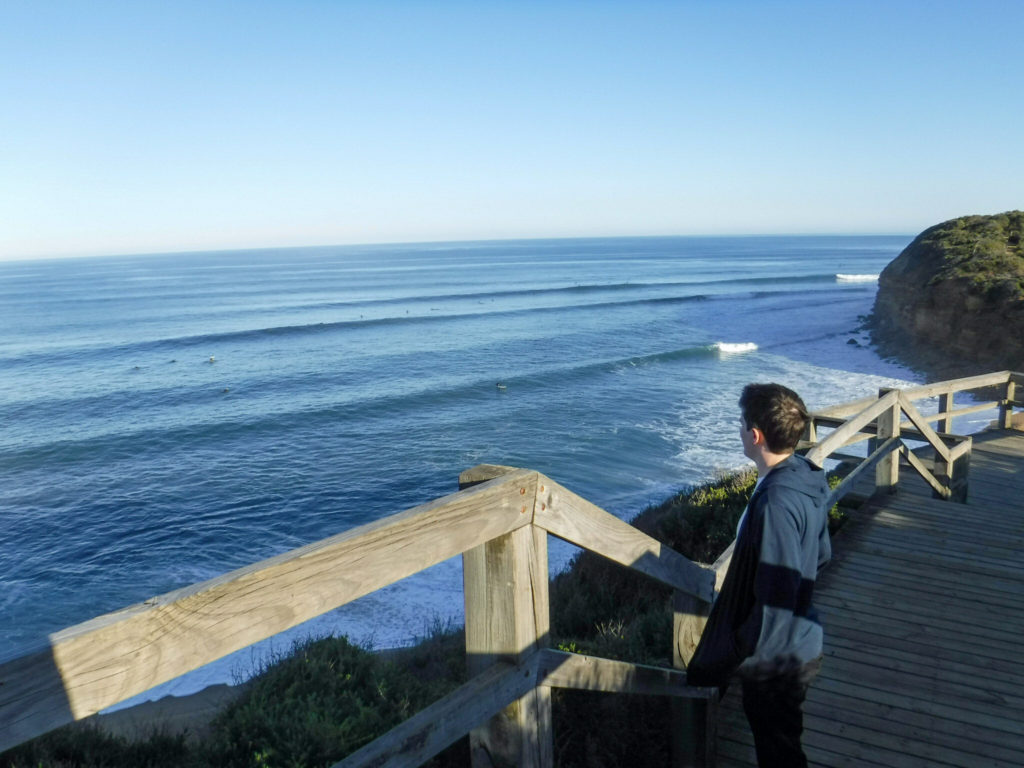
Aireys Inlet
This quaint coastal hamlet is probably best known for its red-crested Split Point Lighthouse, which is apparently haunted! You can buy your entry ticket for a Split Point Lighthouse Tour here. This area features several lookouts which offer stunning views, including over the Eagle Rock Marine Sanctuary, Great Ocean Road and Phillip Island. It is also the gateway to Great Otway National Park. We stopped here to do a food shop and had a wander of the quaint little streets.
Memorial Arch at Eastern View
You can’t miss The Memorial Arch at Eastern View. No, you really can’t miss it as you drive straight under it! But you can pull off into the car park for a longer view too. The arch was erected in honour of the 3,000 returned WWI soldiers who built the Great Ocean Road by hand between 1919 and 1932. Although this is not the original (it had to be rebuilt several times), the arch marks the official start of the Great Ocean Road.

Lorne
Lorne is sometimes described as Melbourne’s equivalent to Byron Bay. On Mountjoy Parade you’ll find lots of waterfront cafés, restaurants and galleries, which is why the town is known for its arts community. Lorne beach is also very popular with surfers and makes a great place to stay for your first night.
Thrill seekers can enjoy the Shockwave Zip Coaster Experience, a long, fast zipline that travels 1,722 feet (525 meters) through the Otway Forest canopy.
The WikiCamps app shows a good range of accommodation here. There’s a free campsite slightly out of town up the mountain, but we had a nightmare trying to find it in the dark and then, in the end, it was closed as it was winter! There’s the perfectly comfortable Lorne Foreshore Caravan Park on the beachfront if you can’t get to a free site. For tea we’d recommend Pizza Pizza.
Day 2 – Lorne to Cape Otway
Erskine Falls
First stop: Erskine Falls for an early morning walk. This 30-metre high cascade is only a 10 minute drive from Lorne – look out for wallabies and other wildlife on your journey up the mountain, especially at dawn! Two lookout points offer scenic views of the waterfall. We descended the 230 stone steps to get a full view of the waterfall from the bottom of the valley. More ambitious hikers can try the full 23km circuit hike from Lorne right up to the falls.
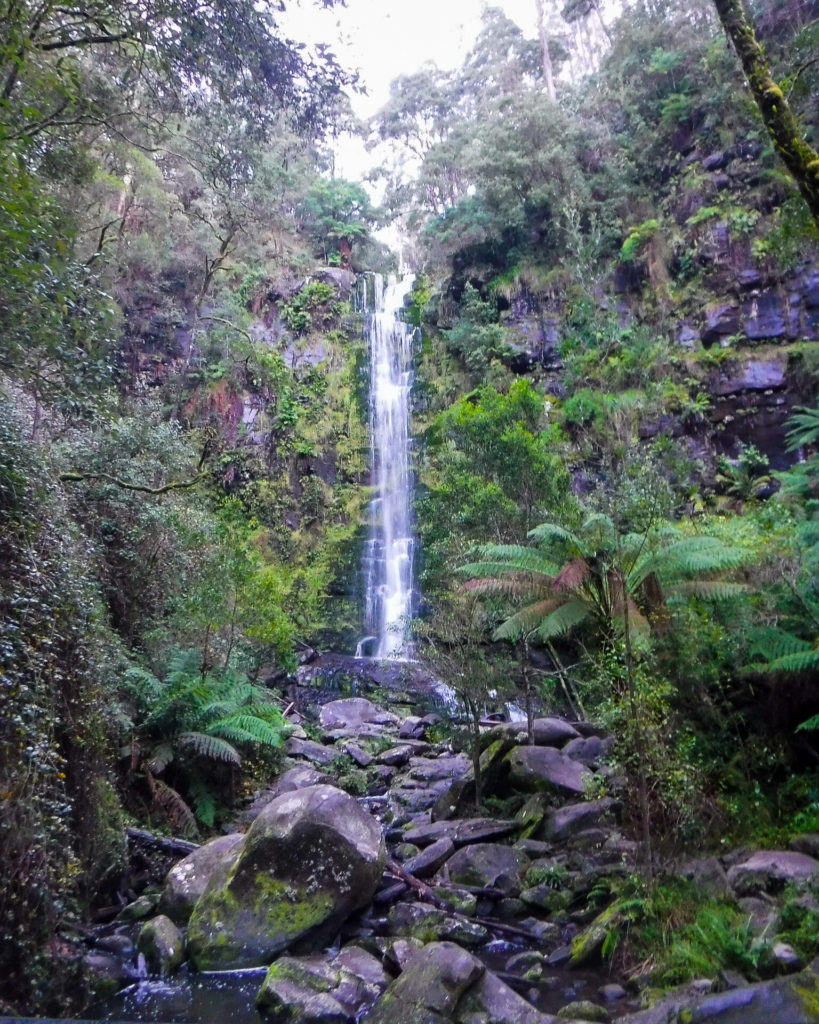
Teddy’s Lookout
Next up is Teddy’s Lookout, which we had all to ourselves. This lookout provides gorgeous, panoramic views of the sea and the winding ocean road.
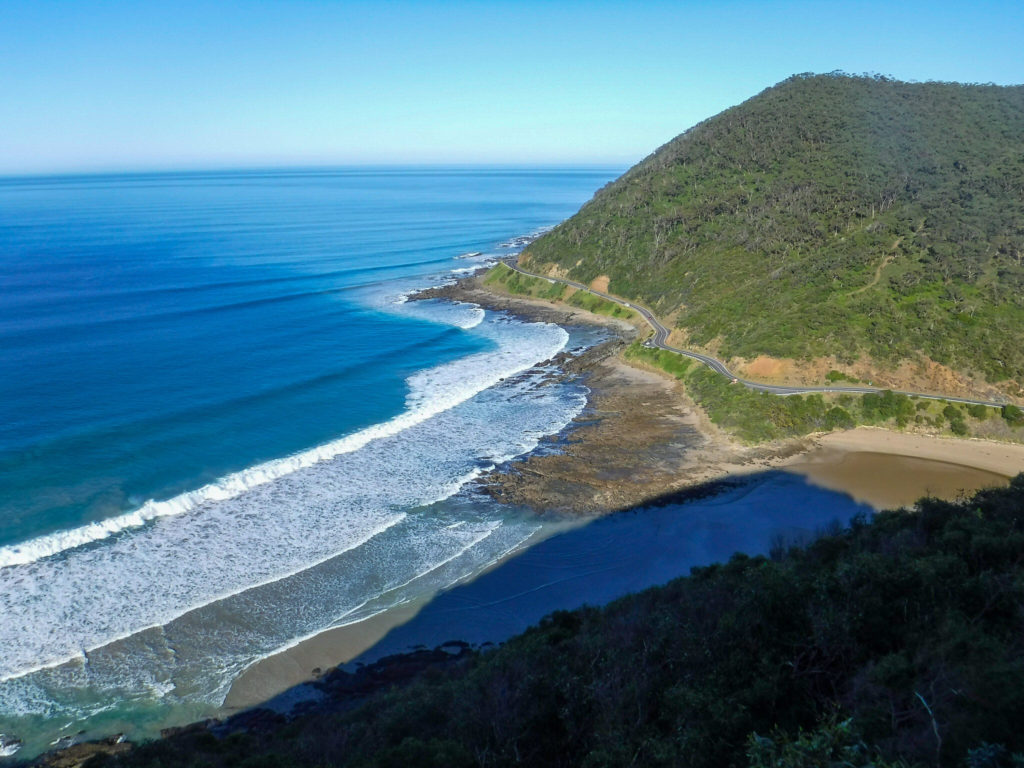
Sheoak Falls
Then it’s time for another waterfall walk. Sheoak Falls is another very impressive waterfall. Follow the mouth of the river to the base of the 15m falls or venture further to Swallow Cave, where swallows can be seen nesting in spring. The walk from the carpark (which offers sea views) to Sheoak Falls only takes about 15 minutes one way.
Make sure to soak up the beautiful views from these long coastal roads, as you wind along the south coast.
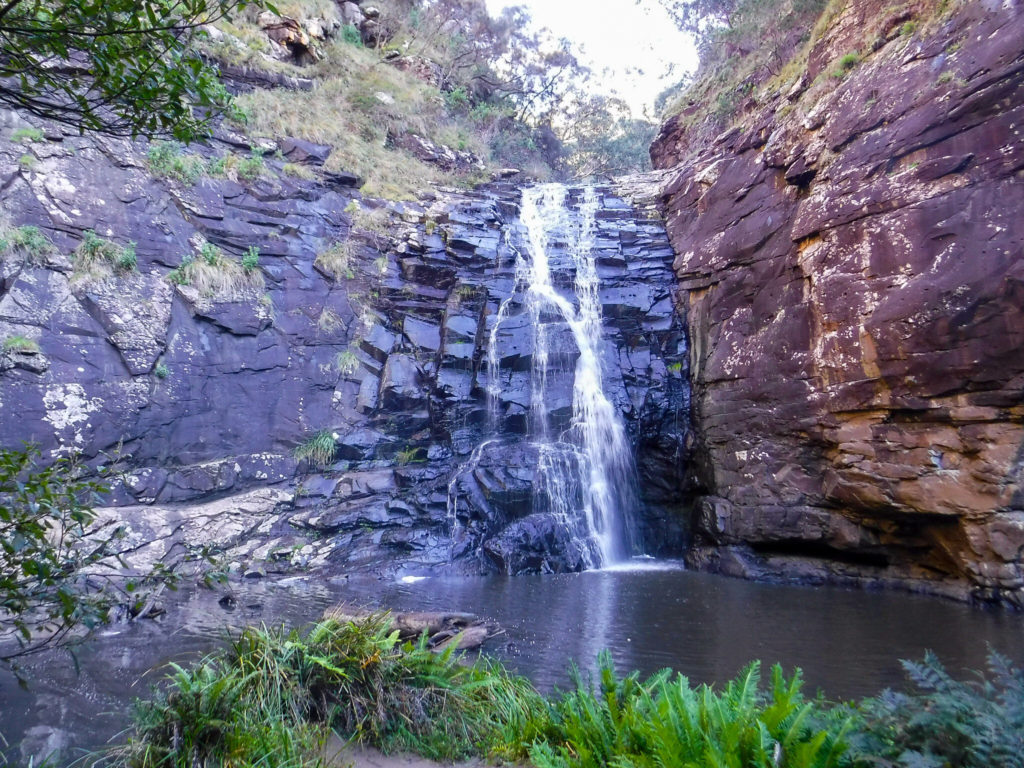
Kennett River
Then stop at Kennett River. This is possibly the most popular stop on the Great Ocean Road and is a wildlife-lovers dream. The area has many birds including King Parrots, Cockatoos, Kookaburras, Purple Swamp Hens, Crimson Rosellas and Australian Wood Ducks. You can buy bird feed from the Koala Café and birds will land on your arms and head to be fed, although they’re so friendly they’ll land on you even if you’re empty handed! Hikers can trek the 15km Koala Walk for a chance of spotting a fuzzy koala or two, but the best chance to see these marsupials is actually in the first 6km to Grey River Picnic Area. Koalas are fairly lazy in the daytime and spend most of their time asleep in the gum trees, which makes them fairly easy to spot!
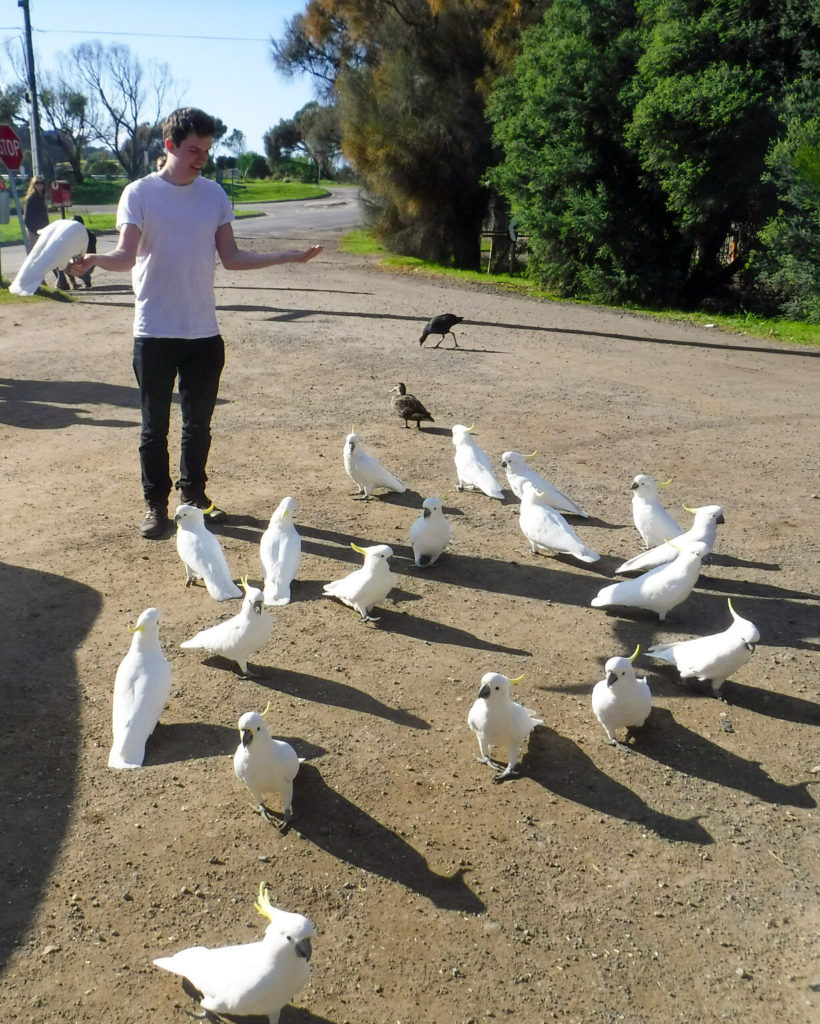
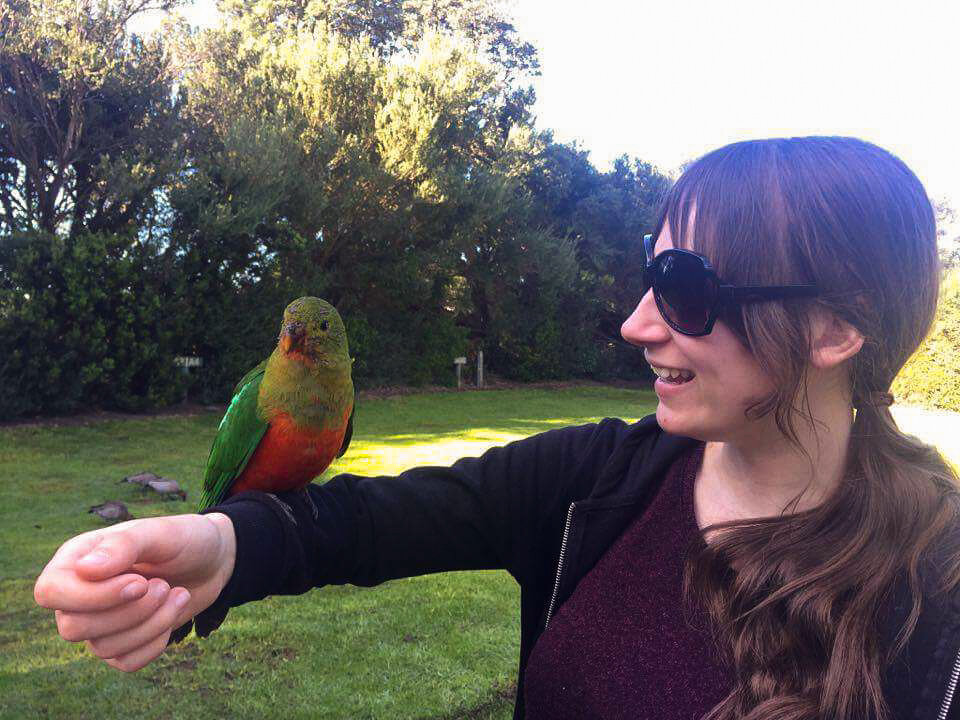
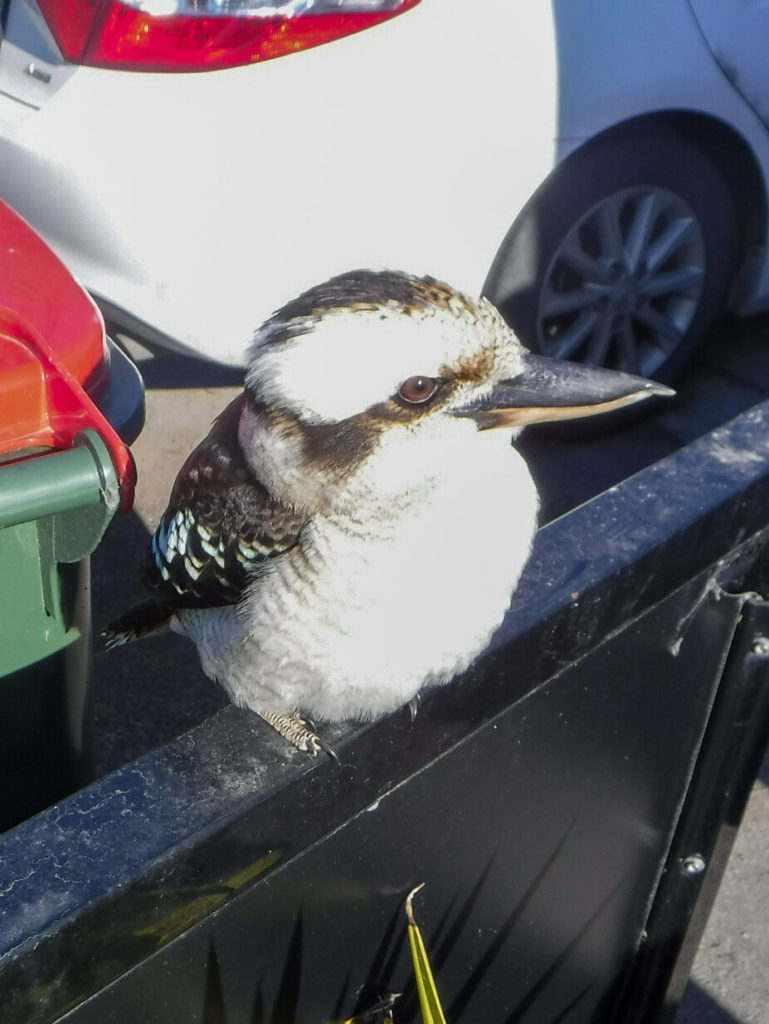
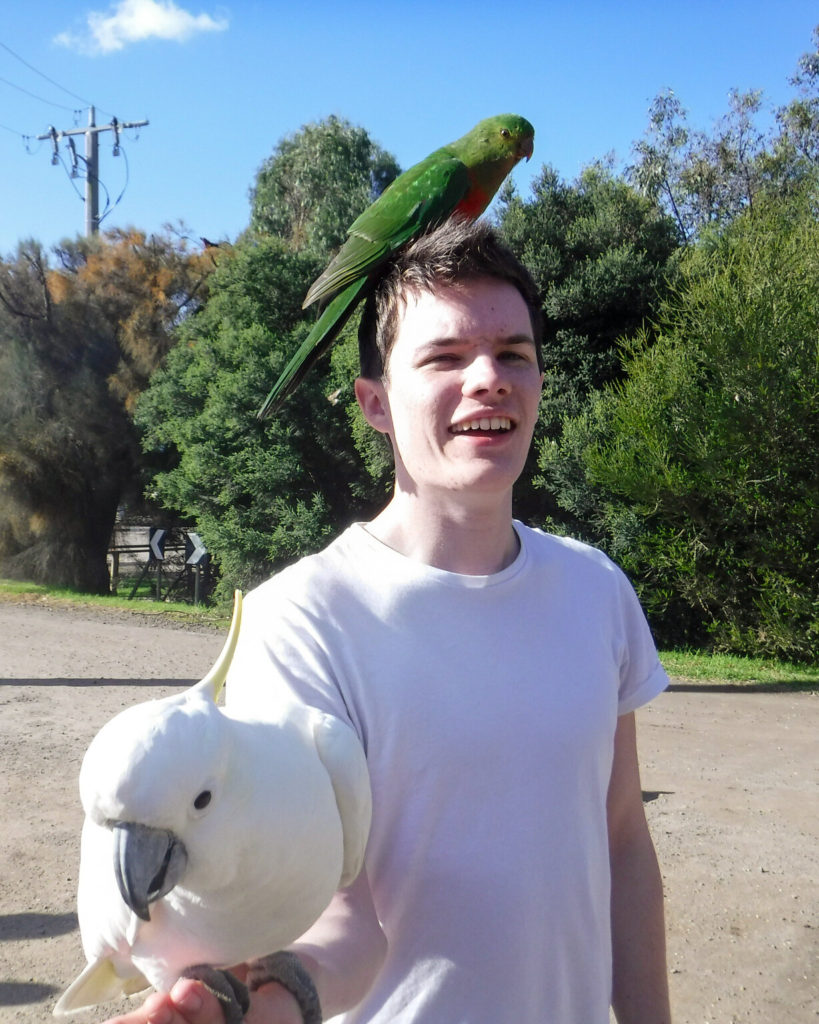
This is where we saw our first kookaburras. On the Koala Walk we spotted a kookaburra land on a dead tree with what looked like a mouse in its mouth. It began viciously whacking the mouse against the tree trunk. Apparently this behaviour is to ensure the prey is dead and soft enough to digest. It was fascinating to witness in the wild.
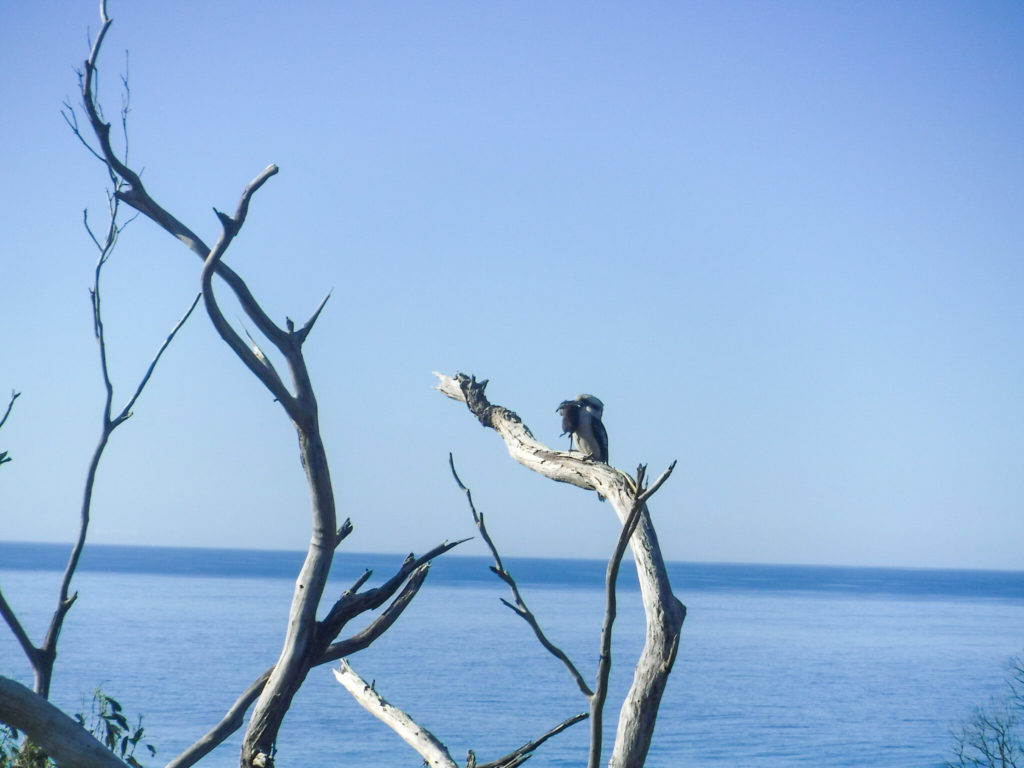
Apollo Bay
The beach here stretches 3.5 km, making Apollo Bay a popular tourist destination. We got chatting to a friendly barman and found out that the population here actually swells to 15,000 in Summer, which is an increase of nearly 1000%! It made us appreciate how lucky we were to be travelling off-peak. We picked up some goon (boxed wine) from the shop here before setting off for the Otways.
Don’t miss the hilltop Marriner’s Lookout, which offers panoramic views over the ocean.
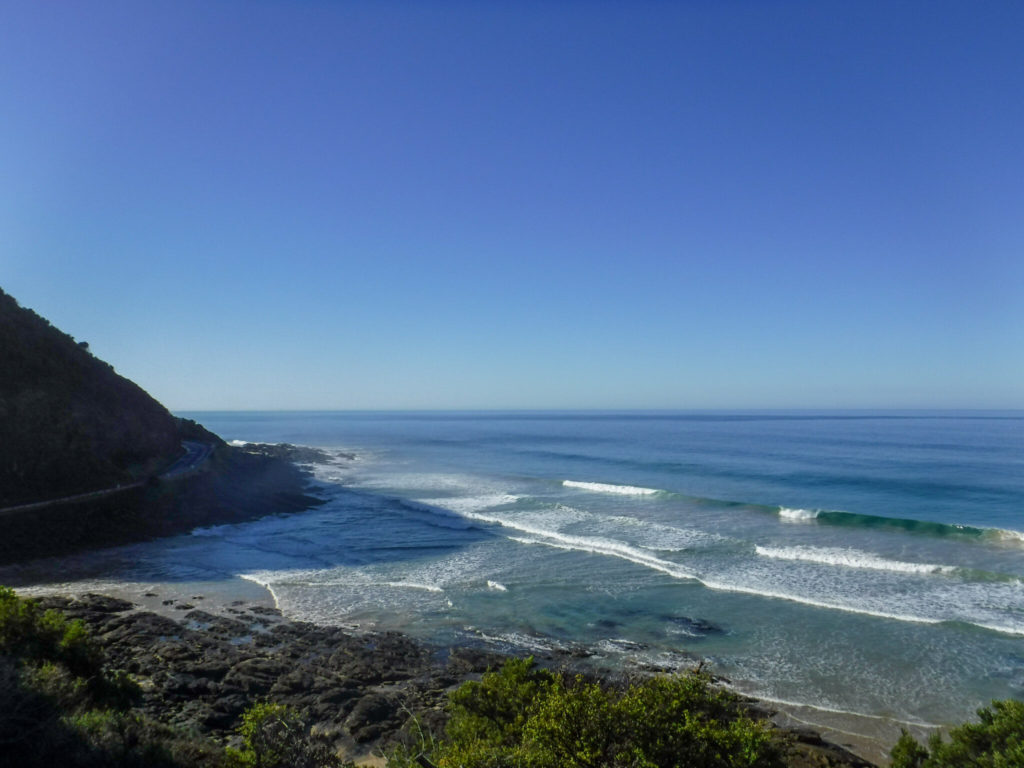
Maits Rest Rainforest Walk
The next stop is Maits Rest for a rainforest walk. Follow the wooden boardwalk on a self-guided 800m circular walk takes you through Australia’s rainforest habitat. It takes about 30 minutes to walk around and you’ll see old Myrtle Beech Trees up to 300 years old and tall tree ferns on the way. You may even see wallabies, koalas, ring-tailed possums and grey kangaroos if you’re lucky! When we were there it was after rain and everything was very damp, which was very atmospheric.
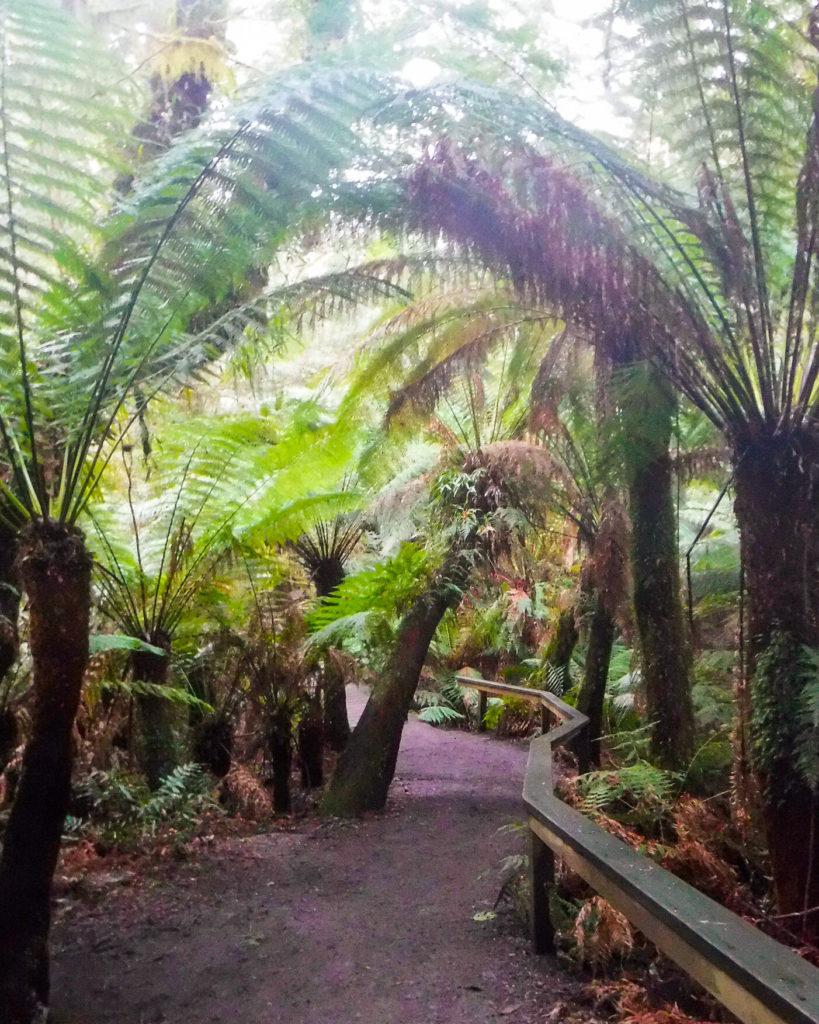
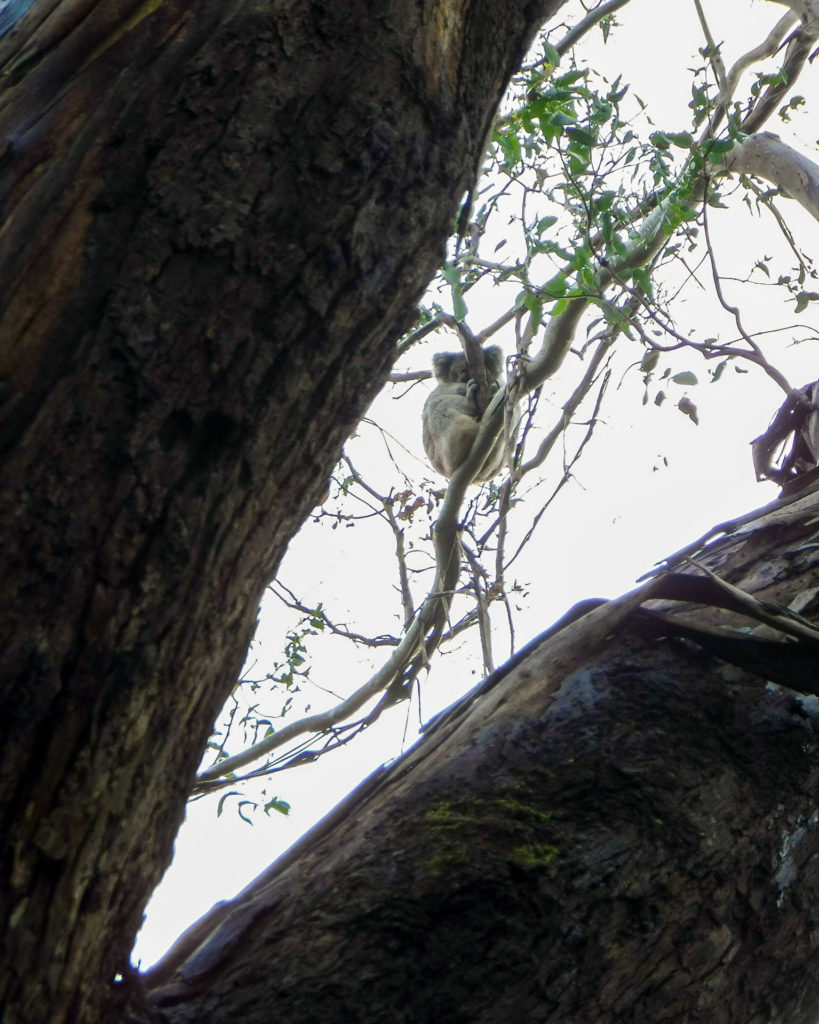
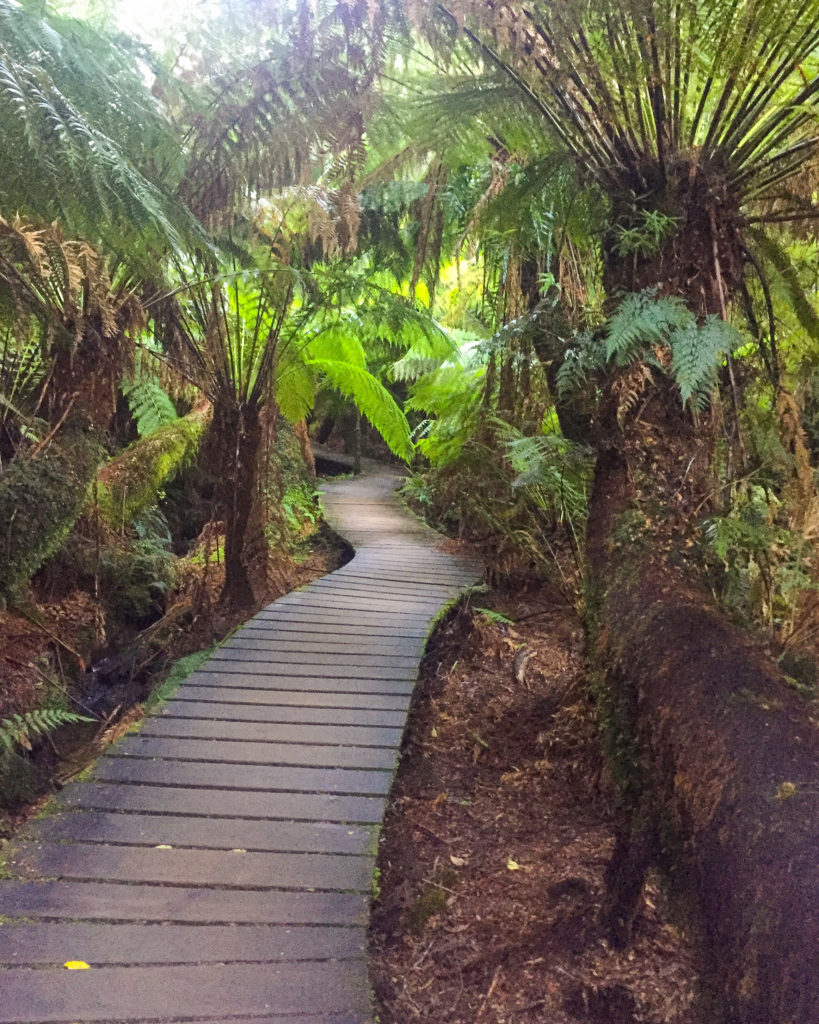
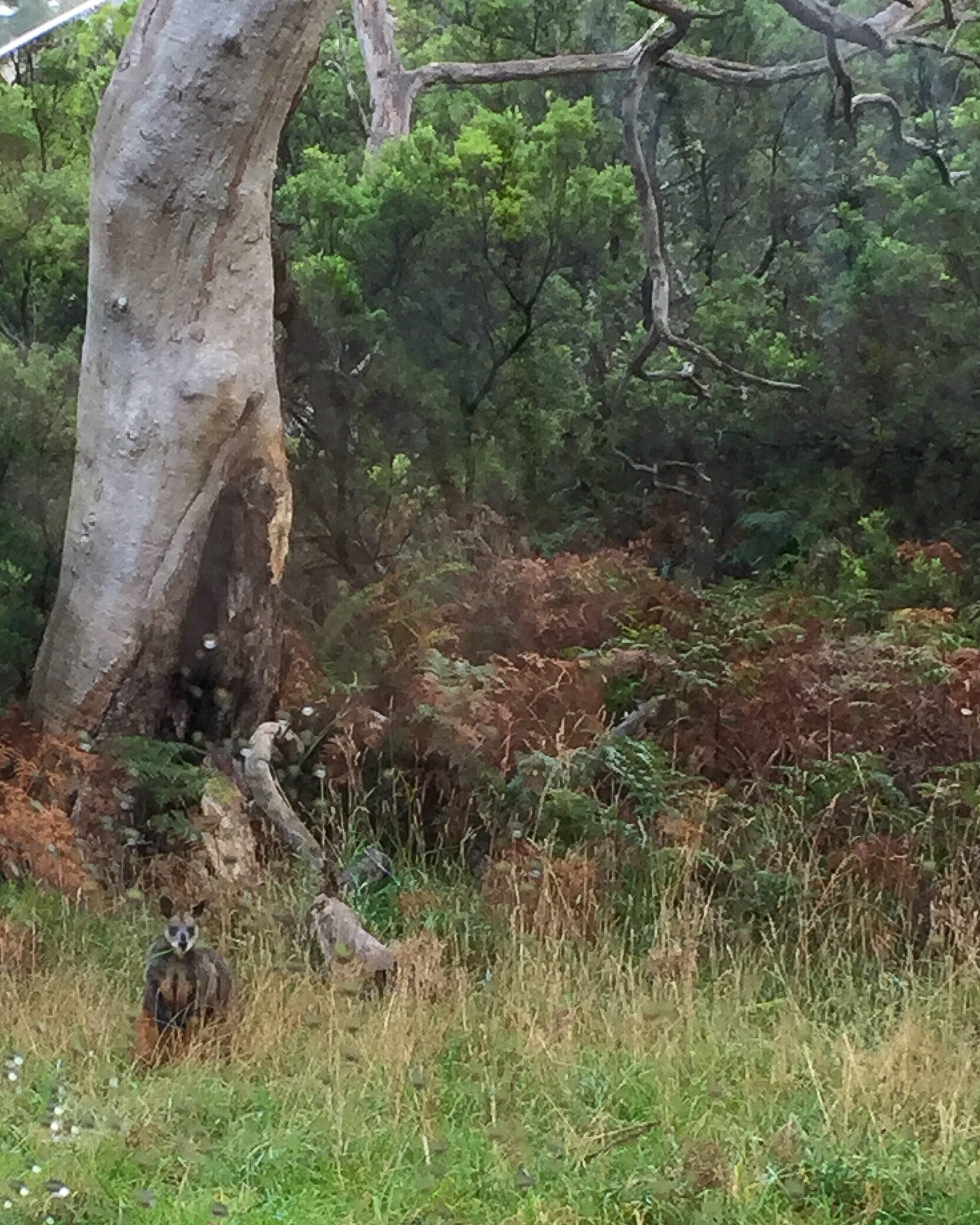
Great Otway National Park
And then you’re into the Great Otway National Park! Made up of 103,000 hectares of rainforest, beaches, waterfalls and heathlands, Great Otway National park is probably the best place to spot Koalas on the great Ocean Road. The park is dotted with waterfalls, including Hopetoun Falls and the famous 3 cascades of Triplet Falls.
We booked a place at Bimbi park for our second night. We took advantage of the camp kitchen to cook some tea and kicked back with some goon. We also met an adorable hand knitted Koala (the lady here knits and sells them) who we christened Kolin and became our travel buddy.
If you’re a wildlife lover, consider joining a Guided Wildlife Walk, a 75-minute guided walk through the magical Otways bushland.
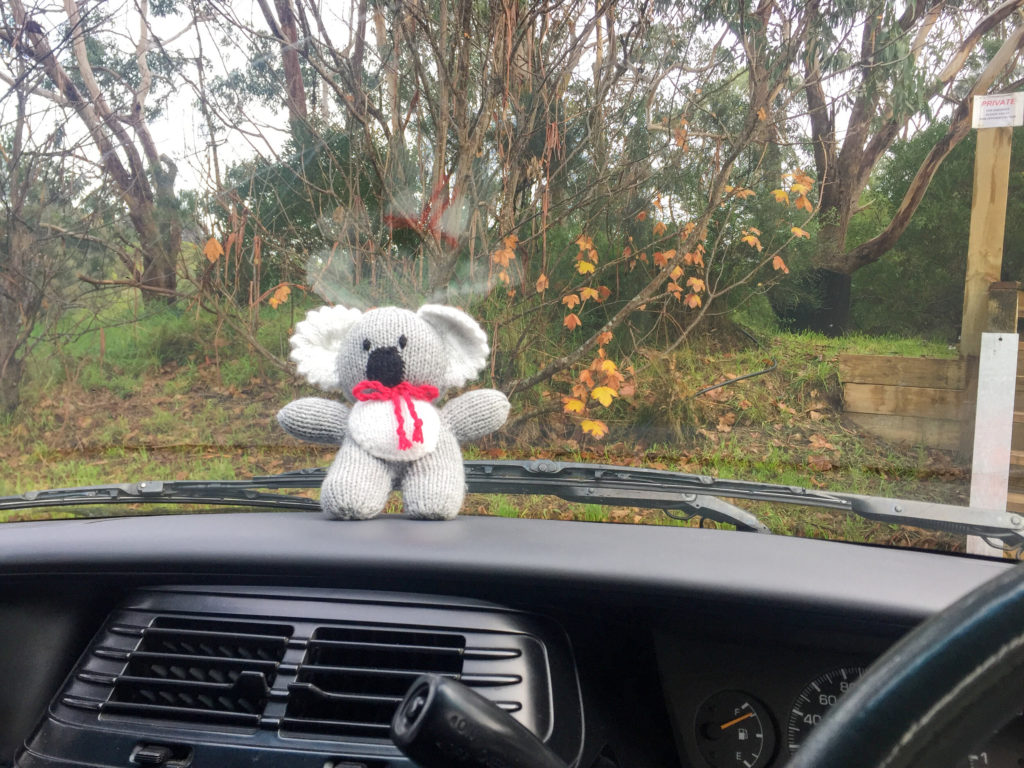
Day 3 – Cape Otway to Warrnambool
You should spend some time exploring Cape Otway. You can visit the famous Cape Otway Lightstation. Built in 1848, this lighthouse is perched on the cliff-edge, overlooking Bass Strait. You can climb the tower on a tour, but you must pre-book. Adventure seekers can fly high at Otway Fly Treetop Walk, which features a tree-top walk and a zipline.
Keep an eye out for koalas. We noticed a car pulled over on the side of the road and wondered what was going on until we saw they were all looking up at a tree. We stopped too and saw our first koala!
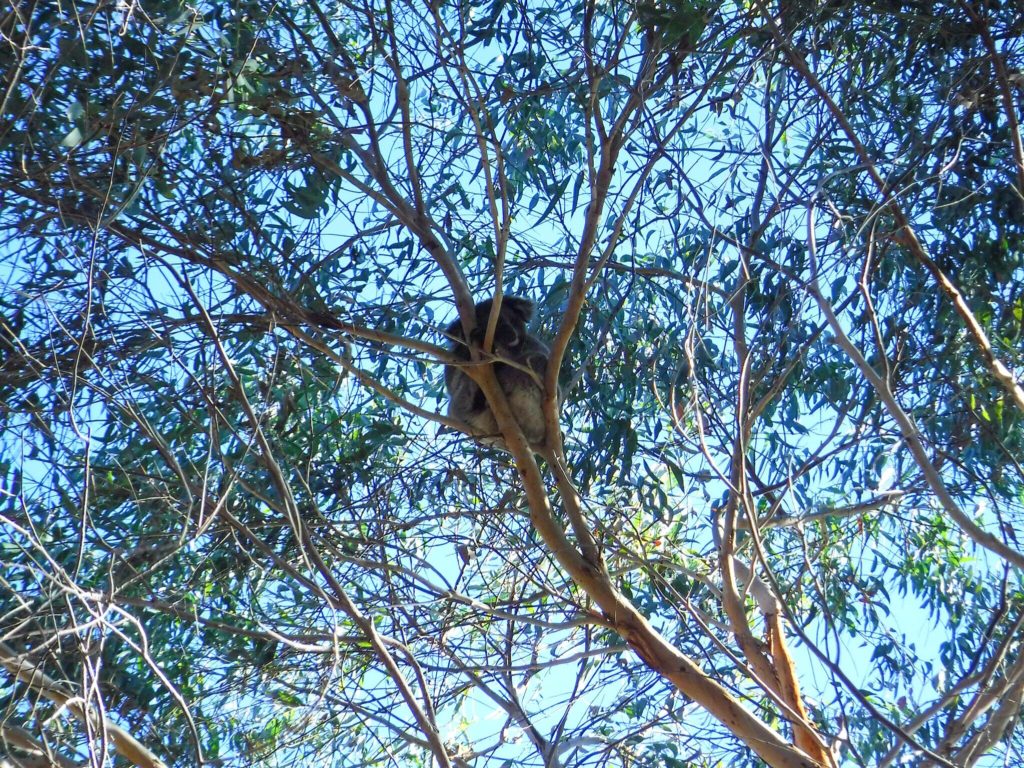
Gibson Steps
When you leave the Otways you start the iconic section of the Great Ocean Road. From here it’s all towering cliffs, impressive limestone stacks and long beaches. Start at the Gibson Steps, a staircase of 86 steps that leads down the cliff face to the beach. The steps were first carved by the local Kirrae Whurrong people. Later, a local settler named Hugh Gibson spent his time carving the steps and maintaining them so that he could access the beach, hence the Gibson Steps.
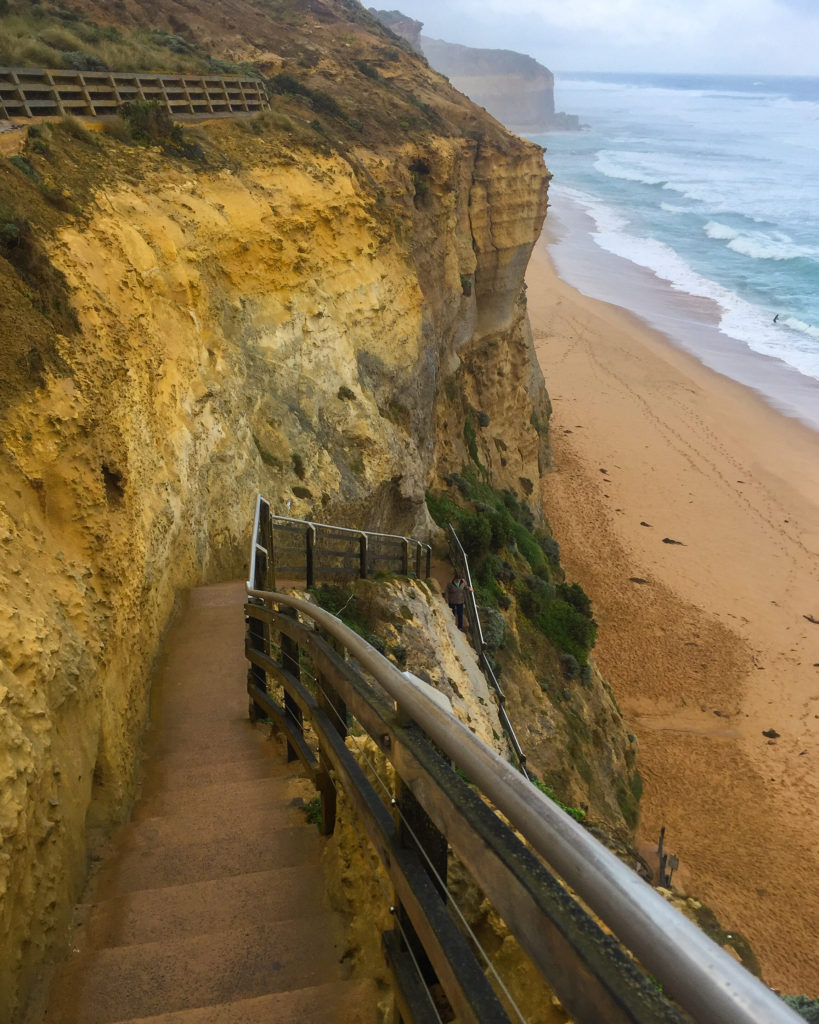
The Twelve Apostles
Then it’s the pièce de résistance: The Twelve Apostles. This is the most famous stop on The Great Ocean Road and you could tell by how big and busy the car park was! The towering limestone stacks here are over 45 meters high and were created over 20 million years ago. Only eight of the twelve are still left standing and you can view them by walking the wooden boardwalk. Adventure seekers can Skydive over the Twelve Apostles from 15,000 feet, soaking up the dramatic landscape in a once in a lifetime experience.
Pro-tip: The middle of the day can get very busy as this is when the tour buses usually stop. Try to time your visit with early morning or late afternoon to avoid the crowds.

Loch Ard Gorge
Next is Loch Ard Gorge, named after the Loch Ard ship that ran aground in June 1878, as it was coming to the end of a three-month voyage from England to Melbourne. Of all those onboard only two survived, Tom and Eva. The two unconnected stacks here have been officially named after them.
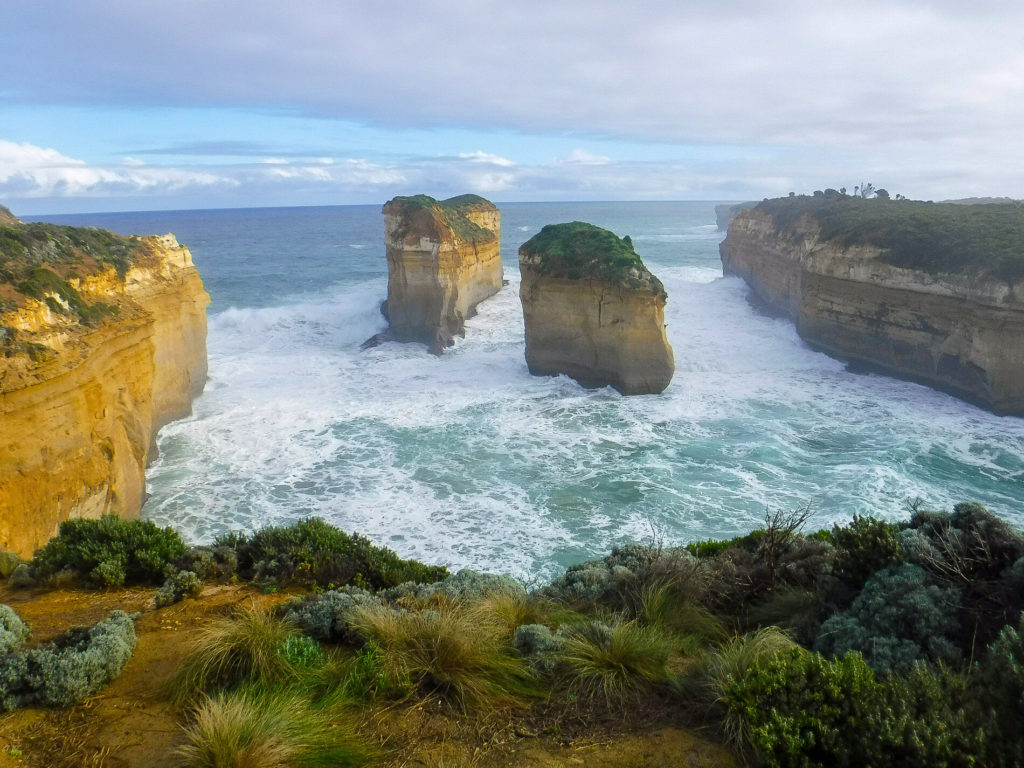
Port Campbell
Then you’ll pass through Port Campbell. We picked up pies here from a little bakery and sat by the beach watching the pelicans (our first pelicans)! This sweet little coastal town is home to restaurants and cafes and plenty of vibrant shops and galleries to explore.
There’s still plenty more to see along this stretch of coast.
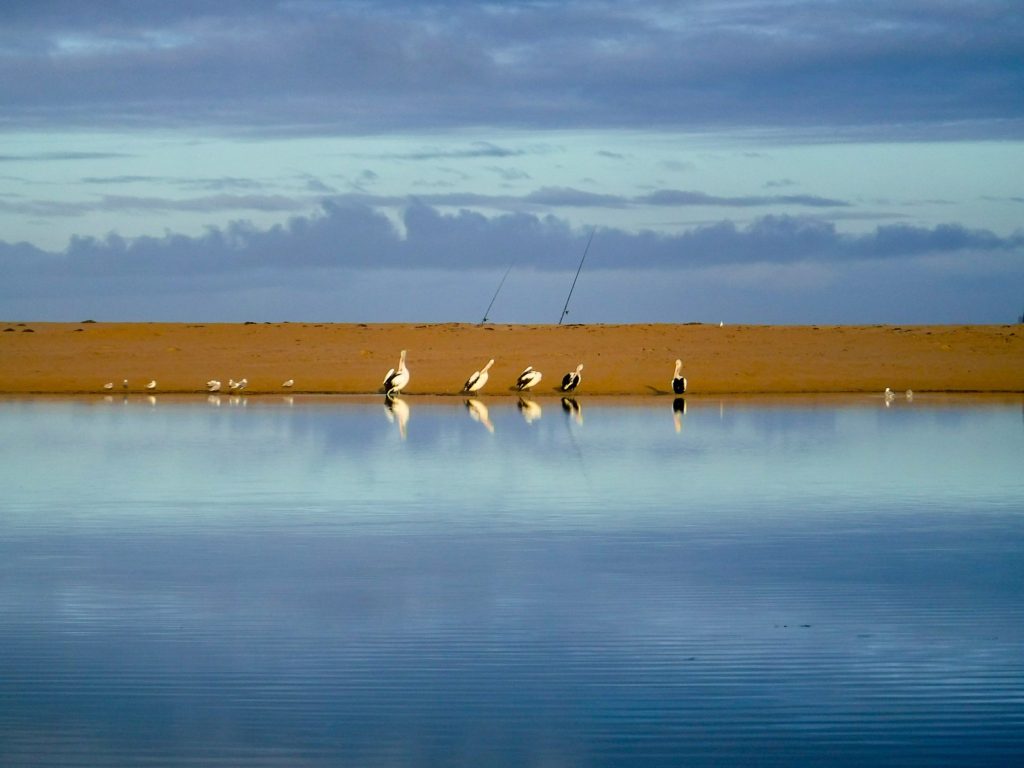
The Arch
Most people miss The Arch and head straight to London Bridge (which could be caused by confusion over the fact London Bridge is also called London Arch). This archway formed over thousands of years and is definitely worth a stop. A short walk from the car park will take you to a lookout where you can watch the waves crash against the cliffs and the swell pool under the archway.
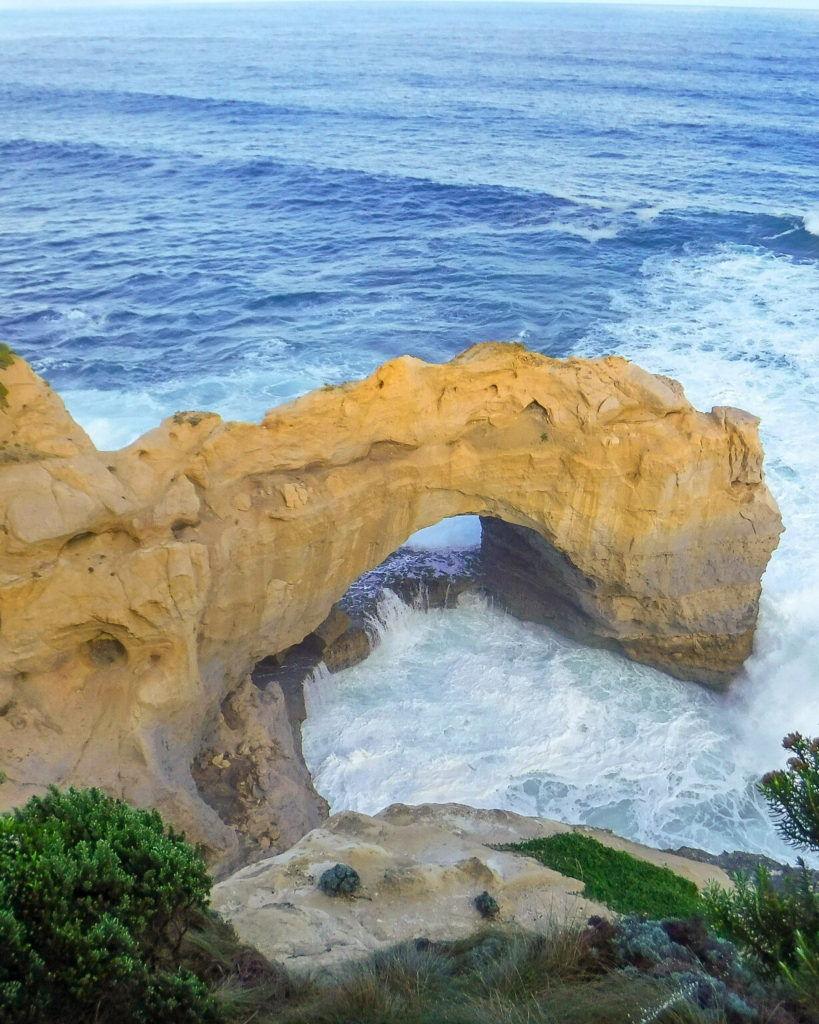
London Bridge
Once a natural double arch, London Bridge is now an isolated, singular limestone arch. You used to be able to walk from the mainland to to the edge of the arches, until erosion caused the middle of the bridge to collapse into the sea in 1990. In fact, when it collapsed, two tourists were left stranded on the new island (don’t worry, they were airlifted to safety).
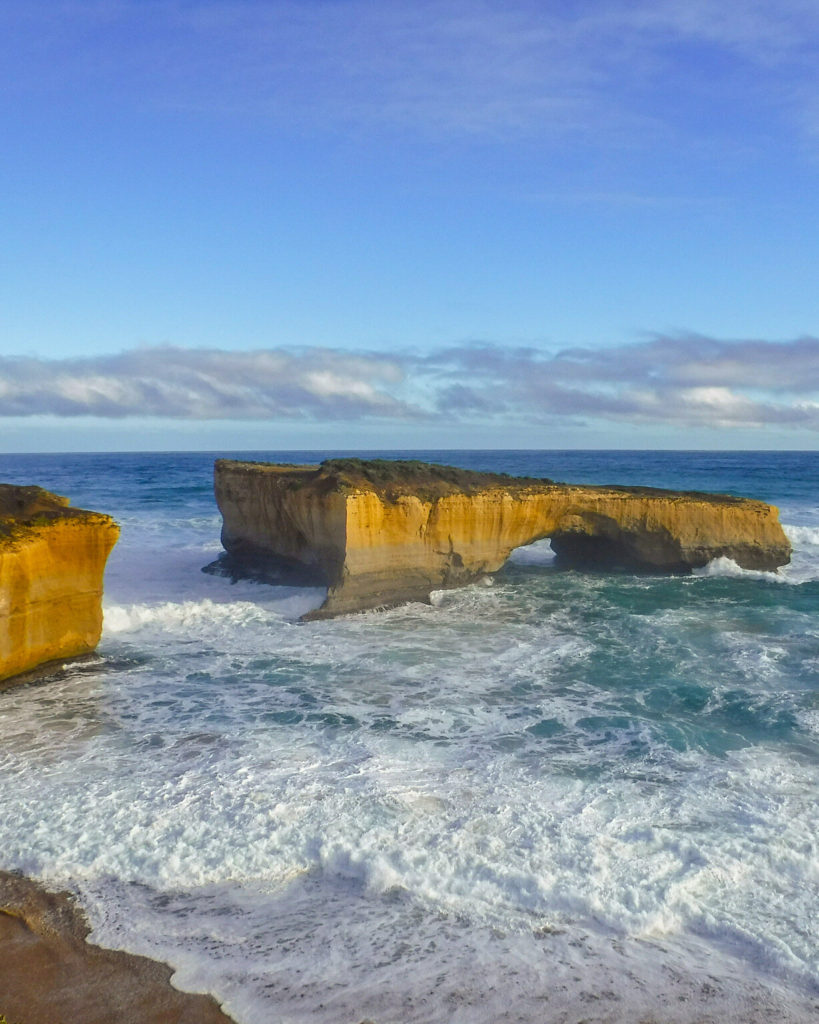
The Grotto
This hollowed out cave is a natural window to the sea and makes a really picturesque setting. It is actually a sinkhole that you can visit by following the winding wooden stairs from the car park down to the bottom. Be sure to visit during low tide so that you can see the ocean behind The Grotto.
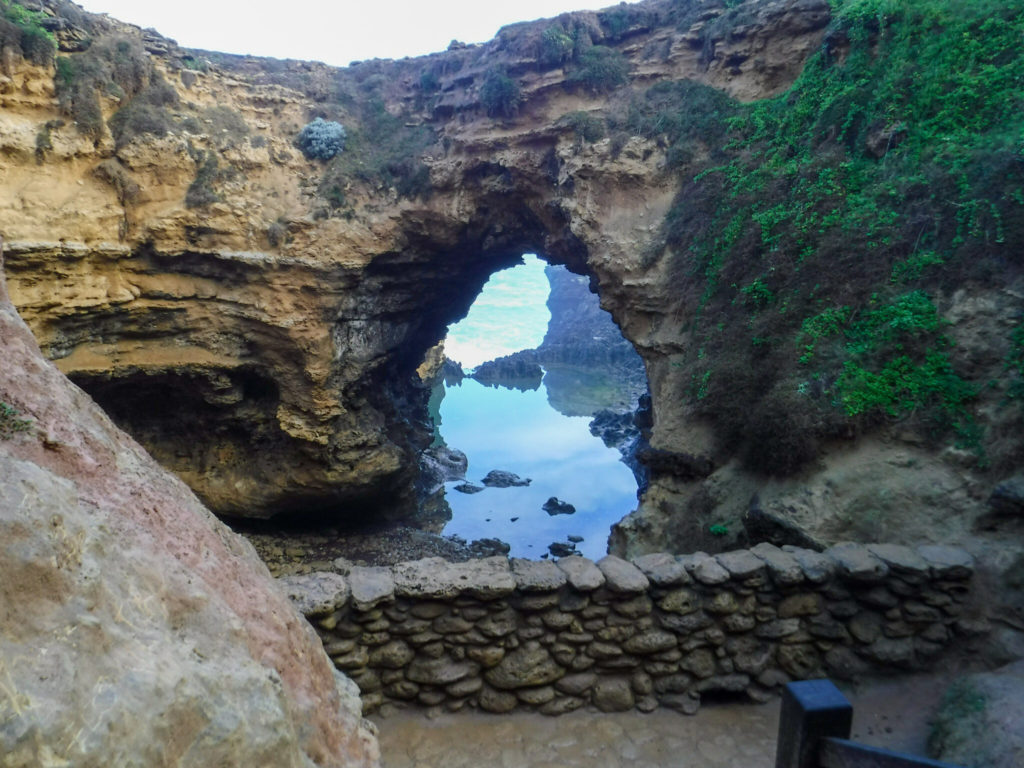
The Bay of Islands
This coastal park is 32 kilometres long and stretches between Peterborough and Warrnambool. There are multiple lookouts for Bay of Islands and it’s worth stopping at all of them. We timed our visit with the sun starting to set, which lit up the sky beautifully with pinks, purples and oranges.

What to do next
We stayed at a free campsite just outside Warrnambool on our final night. This is a great base to check out Allansford Cheese World and Museum or Logan’s beach, a whale nursery in Warrnambool.
Discover a complete list of stops on the Great Ocean Road in our Thorough Guide to Australia’s Great Ocean Road.
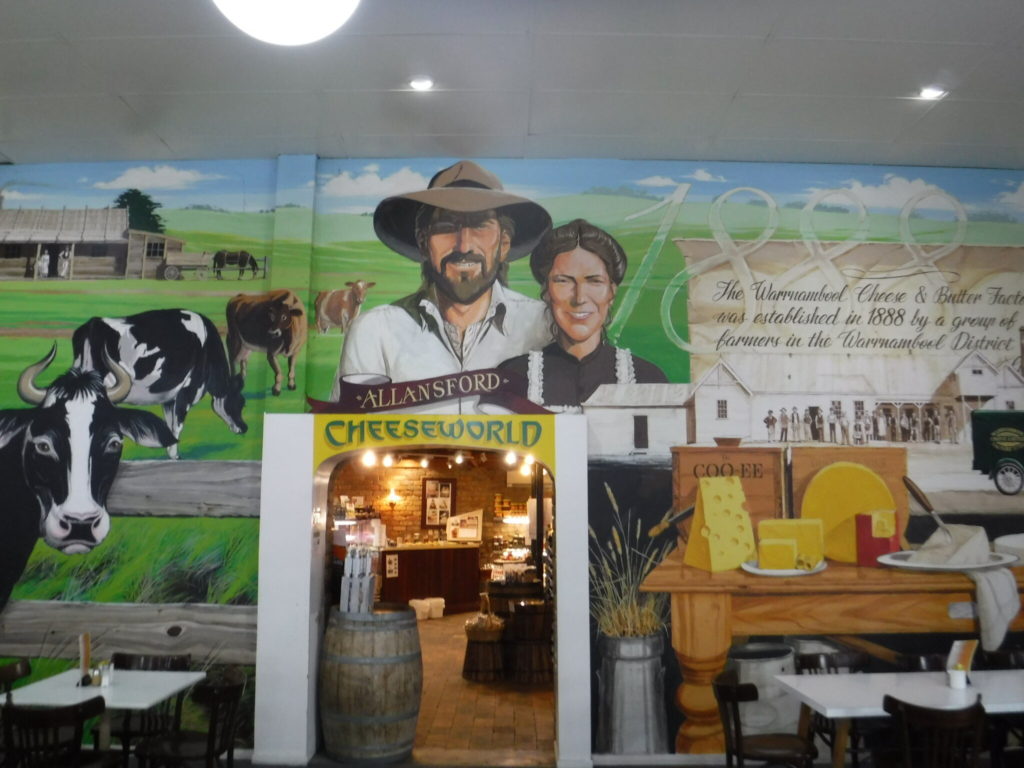
Interactive Kangaroo Island Map
Great Ocean Road Accommodation
If you’re not camping there are still plenty of accommodation options along the Great Ocean Road. You can find out more in The Thorough Guide to Australia’s Great Ocean Road. If you want to combine transport and accommodation into one affordable package, we’d recommend hiring a Spaceship Compact Camper-car. You can read our review of Spaceships here.

Read next:
The Thorough Guide to Australia’s Great Ocean Road
The Thorough Guide to Australia’s Kangaroo Island
Camping in a Compact Camper-Car in Australia
The 22 Best Things to do in Tasmania
The Thorough Guide to Tasmania’s Freycinet National Park
The Best Free Things to do in Sydney
Check us out on social media!
